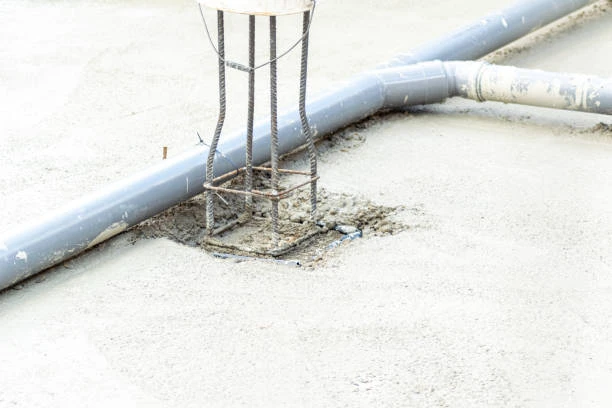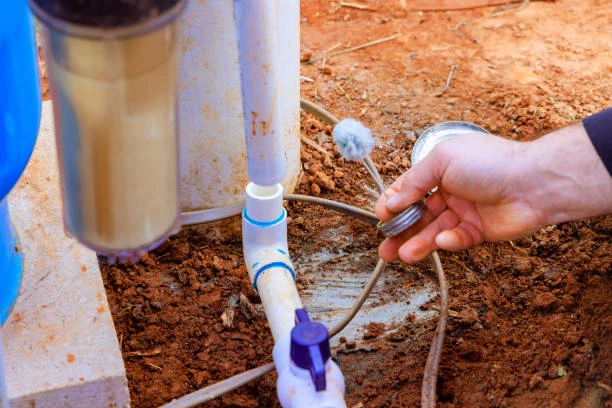The PVC pipes and fittings industry has been experiencing significant growth in recent years. PVC (polyvinyl chloride) has become one of the most widely used materials in plumbing, construction, agriculture, and industrial sectors. The growth of the PVC pipes and fittings industry can be attributed to their affordability, durability, and versatility. In this article, we will explore the factors driving this industry’s expansion, its applications, and the future outlook for PVC pipes and fittings.
What Makes the PVC Pipes and Fittings Industry Thrive?
The PVC pipes and fittings industry thrives because of several key advantages that make PVC the go-to material for various applications. PVC is lightweight, resistant to corrosion, easy to install, and highly durable. These attributes make it suitable for plumbing, drainage, electrical conduit systems, and even agricultural applications.
1. Cost-Effectiveness of PVC Pipes and Fittings
One of the main reasons the PVC pipes and fittings industry is thriving is due to the cost-effectiveness of PVC. Compared to alternatives like metal pipes, PVC is significantly cheaper to produce, transport, and install. This makes it an attractive option for residential, commercial, and industrial projects.
In addition to lower material costs, PVC pipes are easy to work with. Their lightweight nature reduces labor costs during installation, as fewer workers are required to handle the material. Moreover, the ease of cutting and shaping PVC pipes adds to the overall cost savings.
2. Durability and Long Lifespan
PVC pipes and fittings have a long lifespan. They are resistant to corrosion, unlike metal pipes, which can rust and weaken over time. PVC’s resistance to corrosion makes it ideal for applications that involve exposure to moisture, chemicals, and other harsh conditions.
In plumbing systems, PVC pipes are less likely to crack or break when exposed to water or environmental stress. They can last for decades without significant degradation, which contributes to the industry’s growth. This durability translates to lower maintenance costs and fewer repairs for homeowners and businesses alike.
3. Environmental Benefits of PVC Pipes
Another reason for the thriving PVC pipes and fittings industry is the material’s relatively low environmental impact during production and use. While PVC is made from petroleum-based products, it is highly energy-efficient to produce compared to metals like copper. Additionally, the manufacturing process generates fewer emissions.
PVC pipes are also highly resistant to biofouling and degradation, reducing the need for regular maintenance or replacement. Furthermore, many PVC pipes can be recycled at the end of their life cycle, which helps mitigate waste and pollution.
Key Applications Driving the PVC Pipes and Fittings Industry
The PVC pipes and fittings industry serves a wide range of applications across various sectors. Its versatility makes it suitable for everything from residential plumbing to complex industrial systems. Below are some of the key industries driving the growth of PVC pipes and fittings.
1. Plumbing and Water Supply
One of the largest markets for PVC pipes and fittings is the plumbing and water supply sector. PVC pipes are commonly used for drinking water distribution, sewage systems, and drainage solutions. Their ability to resist corrosion and chemical damage makes them a reliable choice for plumbing systems.
PVC pipes are also used in residential, commercial, and municipal water treatment plants. Their lightweight nature makes installation faster and more cost-effective, which is essential in large-scale construction projects. The demand for PVC pipes in urbanization projects and housing developments continues to fuel the industry’s expansion.
2. Agricultural Applications
The agricultural sector has become a significant driver for the PVC pipes and fittings industry. PVC is commonly used for irrigation systems, water delivery systems, and drainage solutions in agriculture. The material’s resistance to chemicals, as well as its ability to handle varying weather conditions, makes it ideal for agricultural applications.
Drip irrigation and sprinkler systems made with PVC pipes ensure efficient water usage and help reduce water wastage in farms. With the increasing focus on sustainable farming practices, the demand for PVC pipes and fittings in agriculture continues to rise.
3. Construction and Infrastructure
The construction industry relies heavily on PVC pipes and fittings for various applications. These include water supply lines, drainage systems, and stormwater management systems. PVC’s durability, low cost, and resistance to weathering make it ideal for use in large infrastructure projects such as roads, bridges, and airports.
As cities grow and infrastructure needs increase, the demand for PVC pipes and fittings will continue to rise. Additionally, the ongoing trend of urbanization in developing countries is boosting the demand for affordable and efficient plumbing solutions.
4. Electrical and Telecommunications
In addition to its use in plumbing and agriculture, PVC is also commonly used for electrical conduit systems and telecommunications infrastructure. The PVC pipes and fittings industry provides essential solutions for safely housing electrical wires and cables, ensuring long-lasting protection from environmental factors.
Electrical PVC conduits are resistant to water and corrosion, which makes them ideal for both indoor and outdoor applications. The rise in the demand for telecommunications networks, especially with the expansion of 5G technology, has further increased the demand for PVC conduit pipes.

Factors Contributing to the Growth of the PVC Pipes and Fittings Industry
Several factors are contributing to the ongoing growth and expansion of the PVC pipes and fittings industry. These factors include technological advancements, urbanization, increasing environmental awareness, and government policies.
1. Technological Advancements in PVC Manufacturing
Advancements in PVC manufacturing technology have significantly improved the quality of PVC pipes and fittings. Newer production methods have made it possible to create pipes with enhanced durability and resistance to high temperatures, chemicals, and UV rays.
Additionally, new innovations in pipe jointing technology, such as solvent cementing and threaded fittings, have made it easier to create strong, leak-proof connections in PVC plumbing systems. These advancements in manufacturing processes contribute to the overall growth of the PVC pipes and fittings industry.
2. Urbanization and Infrastructure Development
The global trend of urbanization is fueling the demand for PVC pipes and fittings. As cities expand and new infrastructure projects are undertaken, the need for reliable, cost-effective plumbing, water, and drainage systems grows. PVC pipes are often the material of choice for these large-scale construction projects due to their low cost, ease of installation, and long lifespan.
In developing countries, rapid population growth and the expansion of urban areas are driving demand for affordable plumbing solutions. This trend is expected to continue as more people move into cities and demand better infrastructure.
3. Increasing Environmental Awareness
Environmental concerns are encouraging the shift toward more sustainable materials in construction and plumbing. PVC pipes have relatively low environmental impact during production compared to other materials like metals, making them an attractive option for eco-conscious consumers.
Furthermore, as PVC pipes are highly resistant to corrosion, they require less maintenance and have a longer service life. This reduces the need for replacement and repair, which helps minimize waste and resource consumption in the long run.
4. Government Regulations and Incentives
Government regulations and incentives promoting the use of PVC in construction and plumbing have also contributed to the industry’s growth. Many governments around the world are encouraging the adoption of durable and cost-effective materials for infrastructure projects.
In some regions, government-backed programs and policies support the use of PVC pipes in water management, sanitation, and irrigation projects. Such initiatives continue to drive the demand for PVC pipes and fittings across various industries.
Challenges Facing the PVC Pipes and Fittings Industry
Despite the robust growth of the PVC pipes and fittings industry, there are several challenges that manufacturers must address. These challenges include concerns over plastic waste, recycling, and the potential health risks of PVC production.
1. Plastic Waste and Recycling Concerns
PVC is not biodegradable, and its disposal can create significant waste management challenges. While PVC pipes can be recycled, the process is complicated and not as widely practiced as with other materials like aluminum or steel. This has led to environmental concerns about the long-term impact of PVC waste.
To address these issues, manufacturers are exploring more sustainable alternatives and improving recycling methods for PVC products. Some companies are even developing new types of PVC that are easier to recycle, helping to reduce the environmental impact.
2. Health and Safety Concerns in Production
PVC production involves the use of potentially hazardous chemicals, such as vinyl chloride, which has been linked to health problems. Manufacturers are working to reduce the environmental and health risks associated with PVC production by improving safety standards and exploring safer alternatives in the manufacturing process.
Future Outlook for the PVC Pipes and Fittings Industry
The future of the PVC pipes and fittings industry looks promising, with continued growth expected in emerging markets, particularly in the Asia-Pacific region. The ongoing demand for affordable, durable, and eco-friendly materials in construction, plumbing, and agriculture will likely drive further expansion.
Technological advancements, increased environmental awareness, and government regulations supporting sustainable practices will all contribute to the continued success of the PVC pipes and fittings industry.
FAQs About the PVC Pipes and Fittings Industry
1. Why are PVC pipes so popular in plumbing?
PVC pipes are popular because they are cost-effective, durable, resistant to corrosion, and easy to install.
2. Are PVC pipes environmentally friendly?
PVC pipes are more environmentally friendly than many alternatives, as they require less energy to produce and are recyclable.
3. How long do PVC pipes last?
PVC pipes can last for decades without significant degradation, making them a long-lasting solution for plumbing systems.
4. Can PVC pipes be used for both hot and cold water?
Yes, PVC pipes are commonly used for both hot and cold water systems, though higher temperature applications may require specific grades of PVC.
5. What are some alternatives to PVC pipes?
Alternatives to PVC pipes include copper, PEX (cross-linked polyethylene), and cast iron pipes. Each material has its advantages and disadvantages.


















